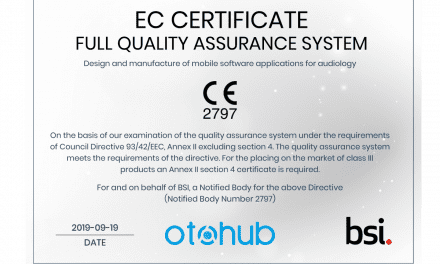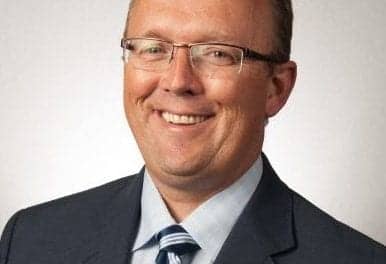Part 1 of this three-part series discussed the differences between the reductionist and open system models of treatment. The former is a simple model used by most medical practitioners in straightforward cases of diagnosis, treatment, follow-up and discharge. Basic problems are contained within an individual framework.1-3 The patient is examined, a remedy is prescribed for the symptoms and/or cause, and the patient is discharged once the problem is remedied.
The open system is a more complex model which presupposes that the patient depends upon and interacts with the environment and relies upon other systems. This model provides a helpful framework for those who are actually involved in human rehabilitation.4-7
Part 1 concluded by discussing the occupational therapy based Model of Human Occupation (MOHO)4, and its potential to be used in other health care fields. The article discussed the hierarchically arranged internal subsystems of Volition (one’s values, interests and beliefs—the highest subsystem), Habituation (one’s roles, habits and self image) and Performance (one’s physical make-up). These subsystems comprised the open system (Fig. 1) which makes up the human being, and interacts with the environment via:

Fig. 1. Diagram of the Model of Human Occupation (MOHO).
- The reception of information from the environment( intake);
- The carrying of information through the subsystems (throughput),
- The individual’s behavior resulting from the his/her summarized judgment(output) and
- Information returning from the environment(feedback).4,5
Applying the MOHO; A Hypothetical Case
The usefulness of the Model of Human Occupation in the rehabilitation of someone with an acquired handicap is demonstrated in the following case history. Dave, a 35-year-old male sheep shearer, lost his right leg in a motor vehicle accident. Following reparative surgery, he received two weeks of hospital care. Not much more than a century ago the loss of his leg would have confined him to a sedentary existence within the confines of a limited environment (if he survived the trauma). But modern technology has now prevailed and Dave was fitted with an artificial limb (prosthesis) as soon as his stump was healed.
VOLITIONAL
HABITUATION
PERFORMANCE
ENVIRONMENT
|
Over time, Dave was taught to walk so well that it would be difficult for the undiscerning eye to know that he was wearing a prosthesis. To some health care professionals, it would appear that the medical team successfully completed their work. But have they? Let’s apply Dave and his situation to the Model of Human Occupation.
Volitional Subsystem: Dave places a high value on independence. He comes from a family with a strong work ethic—he values the ability to provide for his family.
Dave also has strong interests in outdoor pursuits, and before his accident had a strong expectation of success in the future. This aspect is always based on past experiences, and Dave’s physical prowess at sports and outdoor hobbies cemented his self-beliefs. His values and interests helped Dave to develop his Habituation Subsystem.4
Habituation Subsystem: Dave developed daily habits that were conducive to his role as sheep shearer, husband, father and friend. He took the responsibility of bread-winner on his shoulders and took pride in his fulfillment of the role.
Performance Subsystem: With the injury, Dave’s Performance Subsystem has suffered a major loss to his musculo-skeletal system. He also has a defect in his neurological system. Nerves have been severed resulting in the phantom limb phenomenon which plagues so many amputees. In addition, Dave has an impediment to his process skills, which hindered his ability to reach adult-level reading and writing skills.5-7
Without his prosthesis or other assistive devices (wheelchair, crutches, hand-rails) Dave cannot function within his environment. He is confined to a bed or a chair. He is unable to take a bath/shower, cook, or carry out many normal daily living activities without assistance. Supply of the prosthesis has provided Dave with some independence; however, without essential assistive devices, he cannot function in some areas of daily living. He requires help when his prosthesis is off. Even with his prosthesis, he can no longer take part in strenuous sports and he cannot shear sheep.
Healed or Healing?
As the numerous tasks that Dave is unable to perform unaided, and the impact his handicap has on his family (society) are checked off, we start to see a plethora of negative activity within Dave’s open system.4-6
Referring to Table 1, it can be seen that problems are arising within his internal subsystems. His values, interests and beliefs ( volition) have been disturbed by his injury, as have his perceived obligations to his family in the role of breadwinner (Habituation). He has problems dealing with his phantom leg (Performance). Negative behavior (e.g., frustrated outbursts of anger and depression) eventually have an effect on the members of his family who, in turn, feedback signs of disapproval to Dave and increase his fears of failure and rejection. These increased fears continue to affect his behavior and soon Dave is at risk of heading down a pathway of depression and destruction.8
When a person loses a part of their physical body, they become handicapped.8 When that loss has been compensated for by a prosthesis, expectations are that the person can now fully function.9-10 This has been demonstrated many times with animals. We marvel at how a dog, for example, can adapt to the loss of a leg, and how its performance is enhanced when it learns to use a prosthesis.
But humans are complicated. They have more than the simple mind-brain-body performance ability.5 Not only do handicapped individuals require tangible assistive devices to enable them to carry out daily living and working tasks, they also need to be able to succeed in those meaningful interests and activities that will fulfill the expectations of their own ability.1,4-6,9-12 These expectations were firmly laid down during their upbringing and on into their adult lives as they set the pattern for their future.5
Although Dave has a highly technical prosthesis, he is limited in his level of independence. He needs appropriate assistive devices and equipment to enable him to have full independence at all times of the night and day (for example, rails in the bathroom, railings along the stairs, etc.).5.9
The next step in the rehabilitation process is to enable Dave to move further into his environment—and out into the community. His manual shift car must be replaced with automatic transmission for independent travel. The accelerator and brake pedals need to be modified for use with the left leg only.
Dave needs to be assessed for work. But what kind of work? An uninformed health care professional might recommend a safe, sedentary occupation indoors. A discerning therapist would reach for the MOHO to help him obtain a satisfying occupation. Dave’s history shows that he values the ability to earn high wages through long hours of hard, physical work. He does not enjoy a sedentary lifestyle and his below-average reading and writing skills are likely to inhibit his ability to obtain a high paying “white-collar” job.4-6,11
At this point in Dave’s rehabilitation plan, care and attention are required to ensure that the patient will be able to travel a future path of well-being and success. His integration into his environment, his society and culture are of equal importance to the early stages of his rehabilitation—the surgery and nursing care.
Perhaps, in time, as he becomes more adept in the use of his prosthesis, he can return to sheep shearing. Maybe all he needs to do this is experience some coaching and encouragement from the person who helped him establish his short-term, medium-term and long-term goals. Maybe he will become a shearing instructor at the nearby Polytechnic. Dave may also choose to upgrade his reading and writing skills in order to obtain work which fits with his volitional and habituation subsystems.4-6 With the appropriate retraining, coupled with assistive devices, he much more highly likely to succeed.9-11
Summary
The simple reductionist model of assessing Dave’s condition, providing surgical intervention and compensatory rehabilitation in the form of a prosthesis did not fully restore the ability to function in all areas.1 The open systems model of assessing the impact of Dave’s disability on the other areas of his life and providing him with assistive devices, counseling and education allowed him to function physically, emotionally and spiritually within his environment.4-7,9,11
The acknowledgement of Dave’s values, interests and internalized social roles alongside his physical ability is paramount in ensuring that all his needs have been met. Only then can the rehabilitation therapist be assured that Dave will progress along a healthy pathway.
Part 3 of this three-part series will discuss how the above concepts of rehabilitation might be applied to the hearing-impaired client.

Correspondence can be addressed to HR or Glenys Chartrand, United Hearing Systems, 731B Norwich Rd., Plainfield, CT 06374; email: [email protected].
References
1. Wilcock A: An Occupational Perspective of Health. Slack Inc., 1998.
2. Krusen FK: History and development of physical medicine. Physical Medicine in General Practice. Philadelphia: Lippencott, 1946: 5-8.
3. Brintell ES, Cardwell MT, Robinson IM & Madill HM: The fifties and sixties:the rehabilitation era: friend or foe Canad Jour Occup Therapy 1986; 53: 27-28.
4. Kielhofner G, Burke J: A Model of Human Occupation, Part One. Conceptual framework and content. Amer Jour Occup Therapy 1980; 34: 572 – 581
5. Kielhofner G: A Model of Human Occupation: Theory and application. Baltimore: Williams & Wilkins, 1985.
6. Kielhofner G: Health Through Occupation: Theory and Practice in Occupational Therapy. Philadelphia: FA Davis Co, 1983.
7. Chernin D & Manteuffel G: Health: A Holistic Approach. Wheaton, IL: Theosophical Publishing House, 1984.
8. Stedman’s Medical Dictionary (25th edition). Baltimore: Williams & Wilkins.
9. Chartrand MS: The need for aural rehabilitation in today’s dispensing practice, Part 2. Hear Professional 2000.
10. Chartrand MS: The need for aural rehabilitation in today’s dispensing practice: Part 3; Hear Professional 2000.
11. Chartrand M: Hearing Instrument Counseling. Livonia, MI: Intl. Hearing Soc., 1999.
12. Serrett KD: Philosophical and Historical Roots of Occupational Therapy. New York City: Haworth Press, 1985.





